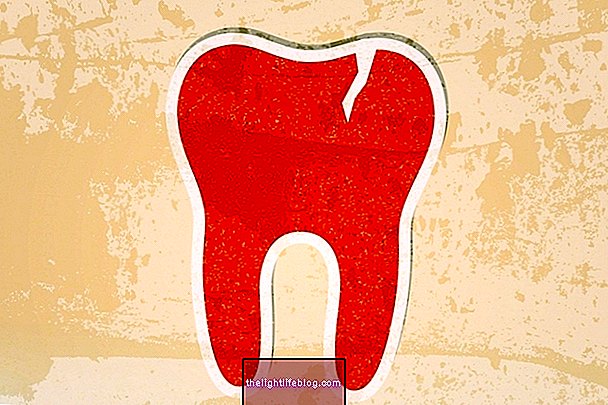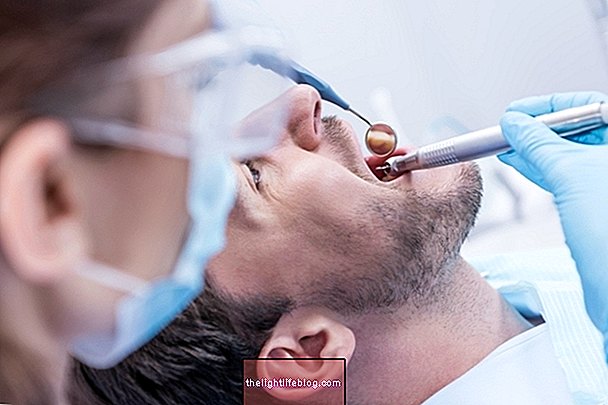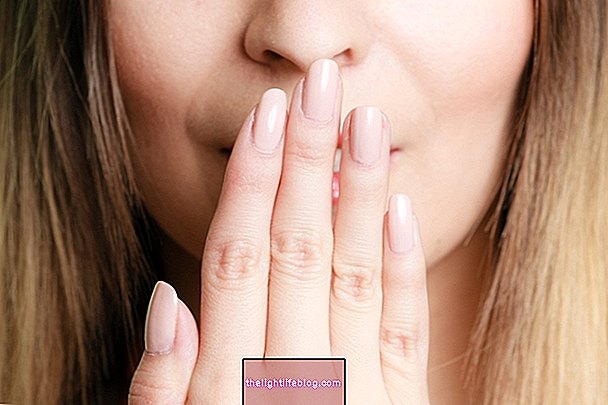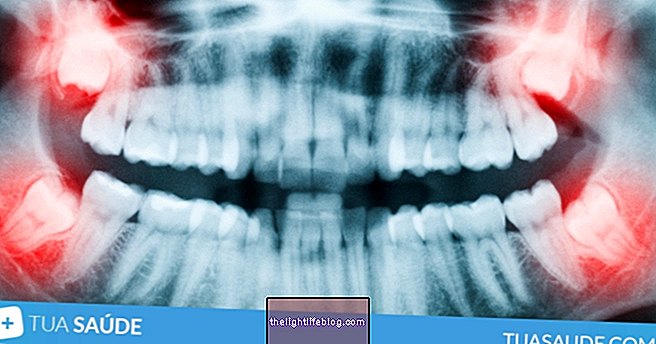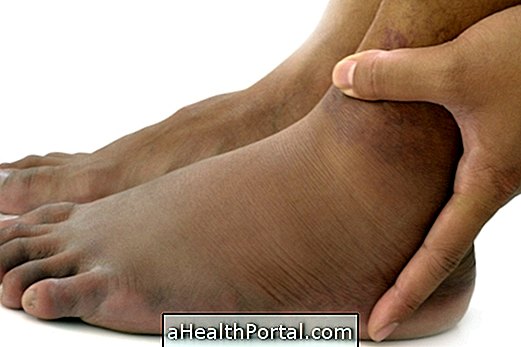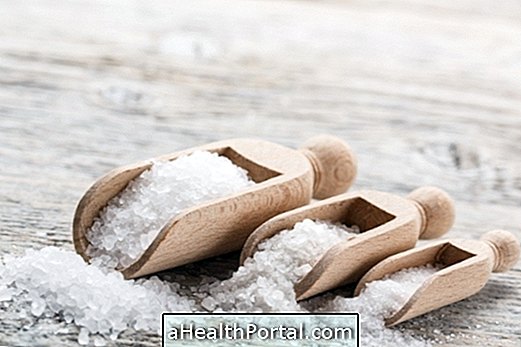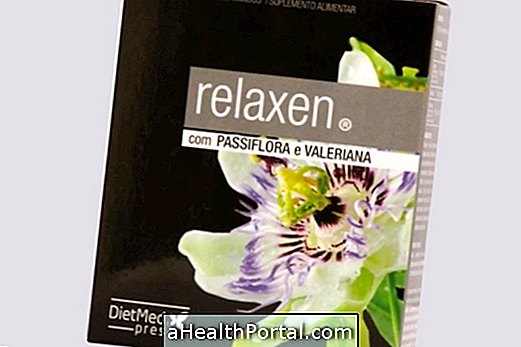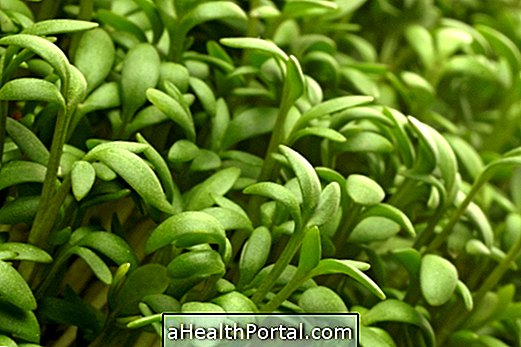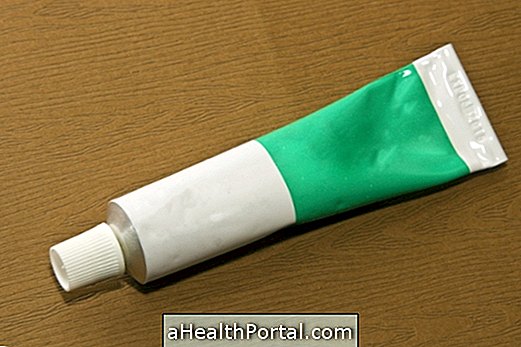The color of the tongue, as well as its shape and sensitivity, can, in some cases, help to identify diseases that may be affecting the body, even if there are no other symptoms.
However, as its color can easily change due to the food that is eaten, it is not always easy to identify the disease just by the tongue. Thus, if a disease is suspected, it is important to pay attention to other symptoms and consult the general practitioner to carry out the necessary diagnostic tests and initiate the appropriate treatment, if necessary.
1. Very red tongue

The tongue is naturally red, however its color can become more intense when there is an increase in body temperature, for example, and, therefore, it may be a sign of some infection or inflammation in the body. In these cases, other symptoms usually appear, such as fever, general malaise and muscle pain.
Redness of the tongue can also be a symptom of a lack of vitamin B12 in the body, as this vitamin is very important for the health of the taste buds. Normally, vegetarians are more likely to be deficient in this vitamin, since its concentration is higher in the meat of fish and other animals. In addition, the very red tongue can also be a sign of lack of vitamin B3, which is a pathology called pellagra. See what foods or supplements to eat in these cases.
2. White tongue

When the tongue has a white plaque, it is usually a clear sign of oral candidiasis, which occurs when you have poor oral hygiene or when your immune system is weakened. Thus, candidiasis is more frequent in children, the elderly or people with autoimmune diseases, for example. In these cases, it is recommended to have an adequate oral hygiene and consult a general practitioner to start treatment with antifungal rinses, in case the symptoms do not improve. Learn more about how to treat oral candidiasis.
When the tongue is pale, it can be just a sign of cold, dehydration, excessive cigarette and alcohol consumption, breathing through the mouth, poor oral hygiene or indicating an anemia, for example, which usually happens due to lack of iron in the body . In these cases, if the tongue remains pale for more than 1 week and excessive tiredness appears, a general practitioner should be consulted to have a blood test and to evaluate the possibility of having anemia. Check out how you can cure anemia at home:

3. Yellow or brown tongue

Usually, the yellowish or brown colored tongue is not a sign of any serious problem, and in most cases, it is caused by poor mouth hygiene.
In addition, there are people who have papillae with a tendency to grow larger than usual. In these cases, the papillae can grab small dead cells of the tongue, which end up being stained by lifestyle habits such as drinking coffee or smoking, for example, gaining a yellow or brown color. These cases do not require specific treatment, improving only with more intense hygiene of the mouth.
Only in rarer cases can the yellow tongue indicate jaundice, as normally the first places to become yellowish are the eyes and even the skin. Jaundice is a sign of liver or gallbladder problems and, therefore, a hepatologist should be consulted if such problems are suspected. See a list of symptoms that may indicate liver problems.
4. Purple tongue

The purple tongue is usually a sign of poor circulation on the tongue, but this usually only happens after severe trauma to the region, such as biting the tongue, for example. Thus, the purple tongue is also usually accompanied by severe pain in the region, swelling and difficulty in speaking or eating, for example. In addition, the tongue may also turn purple if there is a deficiency of nutrients, such as vitamin B2 or riboflavin.
In case of trauma, it can help to apply an ice pebble on the spot for about 30 seconds and repeat for 5 minutes, with an interval of 30 seconds between each application. If the color of the tongue does not improve in 1 week, or if the symptoms worsen, you should go to the emergency room to identify the problem and start the appropriate treatment.
5. Black tongue

The black tongue is, in most cases, accompanied by the sensation of hair growth on the tongue, which are caused by the excessive growth of the taste buds in some people. When the papillae grow, there is a greater chance of accumulating bacteria and dead cells that end up darkening over time. In these cases, only adequate oral hygiene should be maintained.
However, in very rare situations, this color change can also appear in other situations, such as:
- Excessive use of cigarettes;
- Cancer treatments with radiation;
- Frequent intake of black tea or coffee;
- Decrease in saliva production;
- Dehydration;
- HIV.
Thus, if the black tongue does not improve with the correct hygiene of the mouth or other symptoms appear, a general practitioner should be consulted to identify the cause and start the most appropriate treatment.
Was this information helpful?
Yes No
Your opinion is important! Write here how we can improve our text:
Any questions? Click here to be answered.
Email in which you want to receive a reply:
Check the confirmation email we sent you.
Your name:
Reason for visit:
--- Choose your reason --- DiseaseLive betterHelp another personGain knowledge
Are you a health professional?
NoMedicalPharmaceuticalsNurseNutritionistBiomedicalPhysiotherapistBeauticianOther
